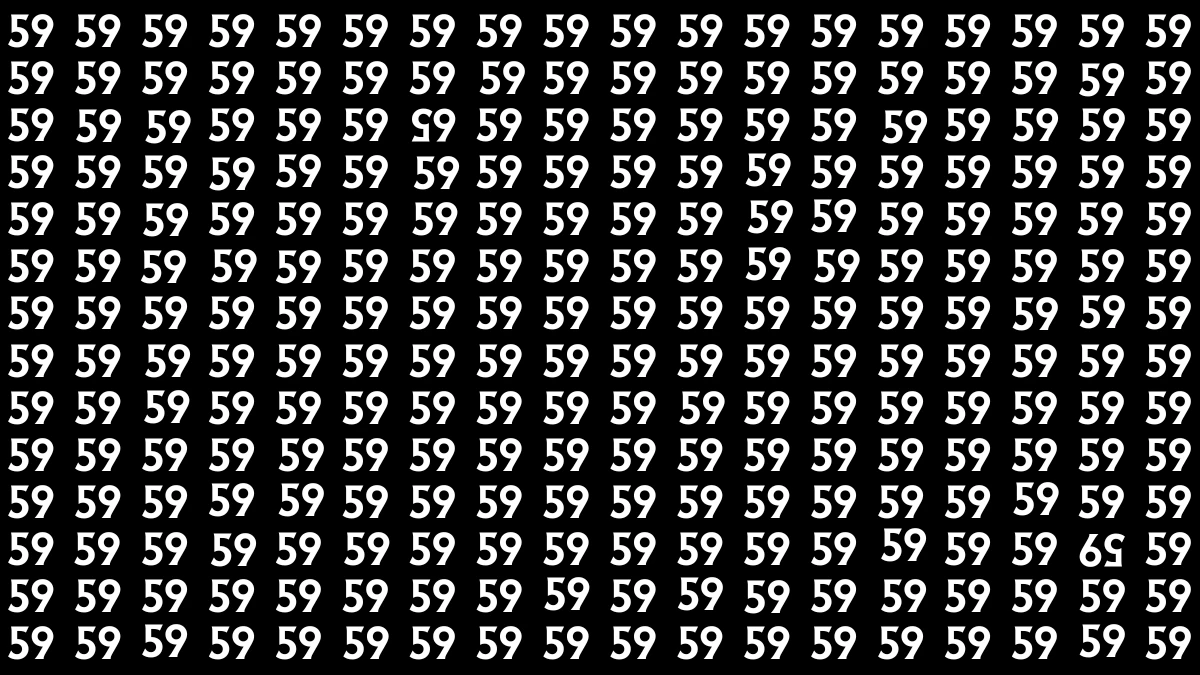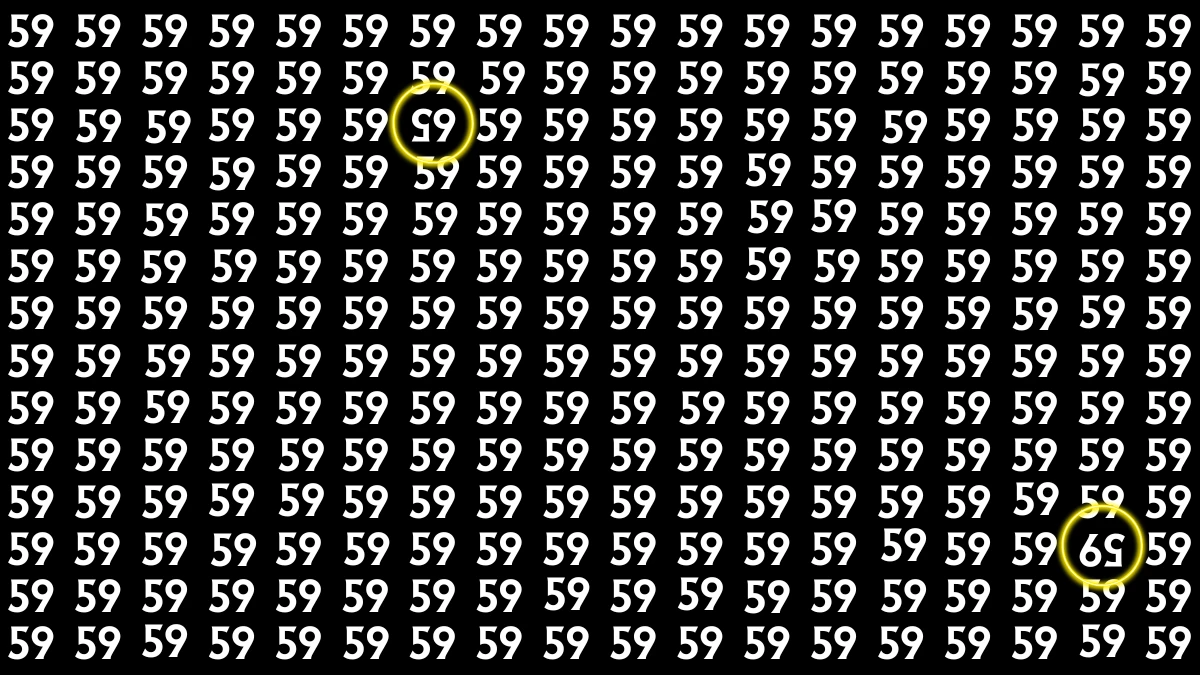Optical Illusion
An optical illusion is a visual phenomenon where the perception of an image or object differs from the reality of what is physically present. The brain interprets visual information in ways that create discrepancies between what is actually there and how we perceive it. This happens due to various factors, including lighting, color contrast, pattern, perspective, and motion. Optical illusions often exploit the way our brains process and interpret visual cues, leading to distorted or misleading perceptions. For example, some illusions make objects appear to move when they are actually still, or cause straight lines to appear curved. These illusions demonstrate the complex nature of human perception, showing how the brain can be tricked by visual stimuli, which can sometimes be influenced by psychological and neurological factors.
Optical Illusion: Within 6 Seconds Spot The Inverted 65 and 59 among 59s
This optical illusion challenges your visual perception and sharpness. In this mind-bending puzzle, you are presented with a series of 59s, but cleverly hidden within the sequence are two inverted numbers: 65 and 59. The task is simple yet tricky spot the inverted 65 and 59 within just 6 seconds! This seemingly easy challenge tests your ability to quickly identify subtle differences in shape and orientation. Optical illusions like this are designed to deceive your brain into focusing on patterns, forcing it to overlook small but important details. The 65 and 59 may blend into the sea of 59s, but with a sharp eye and quick thinking, you'll be able to spot them. These types of puzzles are not only fun but also improve concentration and visual processing skills. Ready to test your perception? The clock is ticking see if you can find them before time runs out!

Optical Illusion: Within 6 Seconds Spot The Inverted 65 and 59 among 59s - Solution
In this optical illusion, the goal is to spot the inverted "65" and "59" among the sea of "59s." At first, the repeating "59s" can make it challenging to spot the two anomalies. The key to solving this lies in recognizing the subtle differences from the consistent pattern. The inverted "65" is located in the third row, seventh column from the left, and it stands out because the numbers are reversed. The "59," which appears slightly different from the others, is positioned in the third row from the bottom, second column from the right. The illusion plays on the eye's tendency to focus on the repeating numbers, causing the variations to be more difficult to identify at first glance. The challenge is to quickly scan the pattern and recognize the out-of-place numbers, which requires sharp observation and a keen eye for detail.






